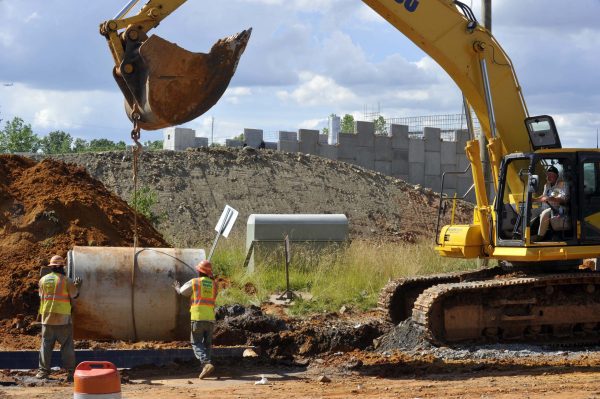‘Raise our expectations:’ Four takeaways from Charlotte City Council’s retreat

Charlotte faces a wide range of needs, from affordable housing to more police, bigger parks and better transit, but they all share a similar root cause: growth.
That was one of the main themes at City Council’s annual planning retreat, held this week over four days in Durham at the Washington Duke Inn. There was little anxiety about when the city’s boom might end. Instead, the focus was on ways to manage, change and deal with the side effects of a booming city.
“We’re growing faster than we’re putting in that critical infrastructure around it, and people are feeling the pain,” said council member Tariq Bokhari.
Here are four takeaways from the meeting about City Council’s priorities for the coming year (You can watch all the sessions recorded online here):
Shift affordable housing from rentals to ownership
As it grows, Charlotte becomes a more expensive place to live. Rents average $1,238 a month, up from $842 in 2013, according to Real Data. That’s a 47 percent increase in just six years.
At the same time, older buildings with cheaper rents are being torn down to make way for luxury apartments. The 2019 Housing Instability Report found there’s a shortage of about 27,000 housing units for families making less than 30 percent of the area’s median income (roughly $16,600 for a single person, or $25,750 for a family of four).
Facing this need, Charlotte has increased its housing bonds from $15 million to $50 million every two years, while groups like Foundation for the Carolinas and major banks have raised private funds, bringing the total available to more than $250 million. So far, much of that money has gone to subsidizing affordable apartments, to be built by private developers.
But several council members, and Mayor Vi Lyles, said they now want to look at more ways to subsidize home ownership.
“We’re building a lot of apartments. We clearly understand that families gain wealth through homeownership,” said Malcolm Graham. “That’s an area we really want to begin focusing on.”
Graham pointed to the need for land-banking, community land trusts or other mechanisms to get control of land in fast-changing areas before it’s bought up by developers.
“At this point, the main thing is land control,” he said. “The overarching theme is land control along these distressed corridors.”
Time for higher development standards?
“We’re not the needy little city we used to be,” UNC Charlotte architecture and urban design professor Deb Ryan told council members. “We’re a city that has choices now, and so we can raise our expectations.”
Charlotte has long had a reputation as a developer-friendly city, with boosters anxious to promote growth. Bokhari mentioned Charlotte’s “little brother syndrome” and comparisons with Atlanta.
But now, with the city continuing to attract Fortune 500 companies, hoards of millennials and a seemingly endless wave of breweries, there’s less anxiety that all that growth might just go “poof” and disappear some morning.
That might make it more palatable now to demand higher development standards for new buildings. Think regulations requiring buried parking instead of massive decks, more pedestrian-friendly designs and amenities, higher-quality materials, or mandatory ground-floor retail in busy areas.
Scott Smith, the CEO of Valley Metro and former mayor of Mesa, Az., told council members that they should set, and demand, higher standards.
“The greatest sin I think city council, city leaders can do is accept average,” he said. He recalled raising design standards in Mesa.
“This is the same ugly stuff you built last time,” Smith said he told developers. “We’re not going to accept that anymore. We’re going to elevate.”
Transit funding is a big question mark
Out of all the questions facing City Council, the biggest single one might be how to pay for the city’s ambitious transit plans.
Building the east-west Silver Line might cost $3 billion to $4 billion, or more. The city won’t know until more detailed plans are complete. Increasing bus frequency on all routes to 15 minutes or less would require up to $60 million in capital costs and $32 million a year in additional operating costs. There’s no price tag yet for contemplated north-south rail extensions, or funds to finish the 10-mile Gold Line streetcar route.
“We’re really talking about making some bold moves in transportation,” said Mayor Pro Tem Julie Eiselt. We’ve got to start talking about how we’re gonna pay for it and what it’s gonna cost.”
[Related: Should Charlotte make its transit system free?]
A new light rail line will need state and federal subsidies. Developing a regional rail system, including Gaston, Union and Cabarrus counties, would require a new, regional funding model. And Mecklenburg could seek to increase its half-cent transit sales tax, a move that would require state legislature and local voter approval. Meanwhile, 2030 (the year the Silver Line is expected to open) is fast approaching.
“How much does it cost to build that whole system out?” Graham said. “Let’s put that on a piece of paper and see what that looks like.”
Too much growth in some areas?
Several council members expressed anxiety about the crush of new apartments, houses and offices into a few busy corridors, such as Providence Road, that are already congested.
“We need to shift the way we grow,” said Matt Newton, “rather than create that mess and then clean it up.”
Renee’ Perkins Johnson said council needs to evaluate the cumulative effects of rezonings and development over multiple years in areas like University City with “comprehensive impact studies,” rather than considering each in a vacuum.
Victoria Watlington echoed her concerns.
“We’re in a very different situation than we were when we had a lot more land, and we could build and build and build,” she said. “Are we at capacity in certain areas?”